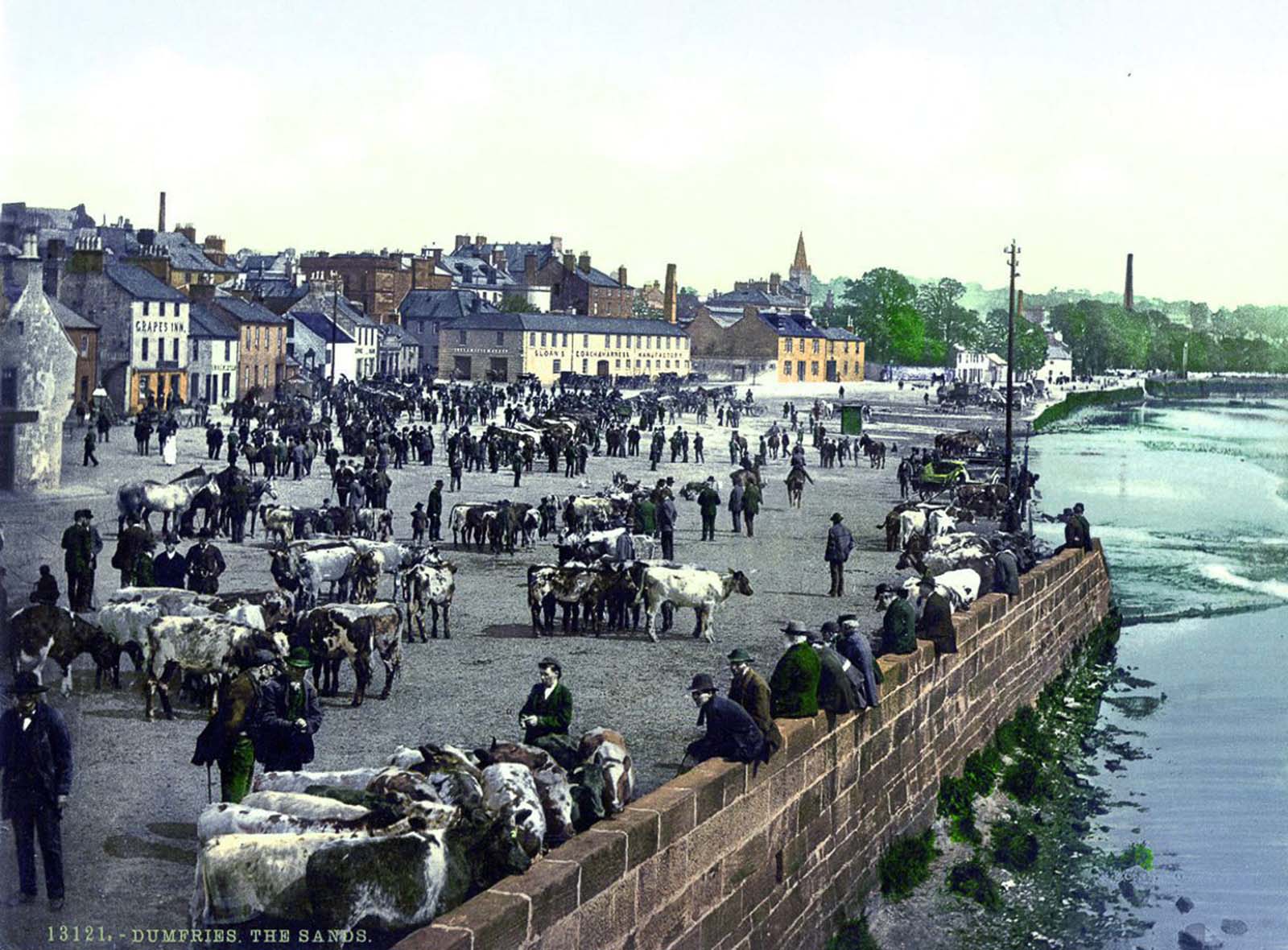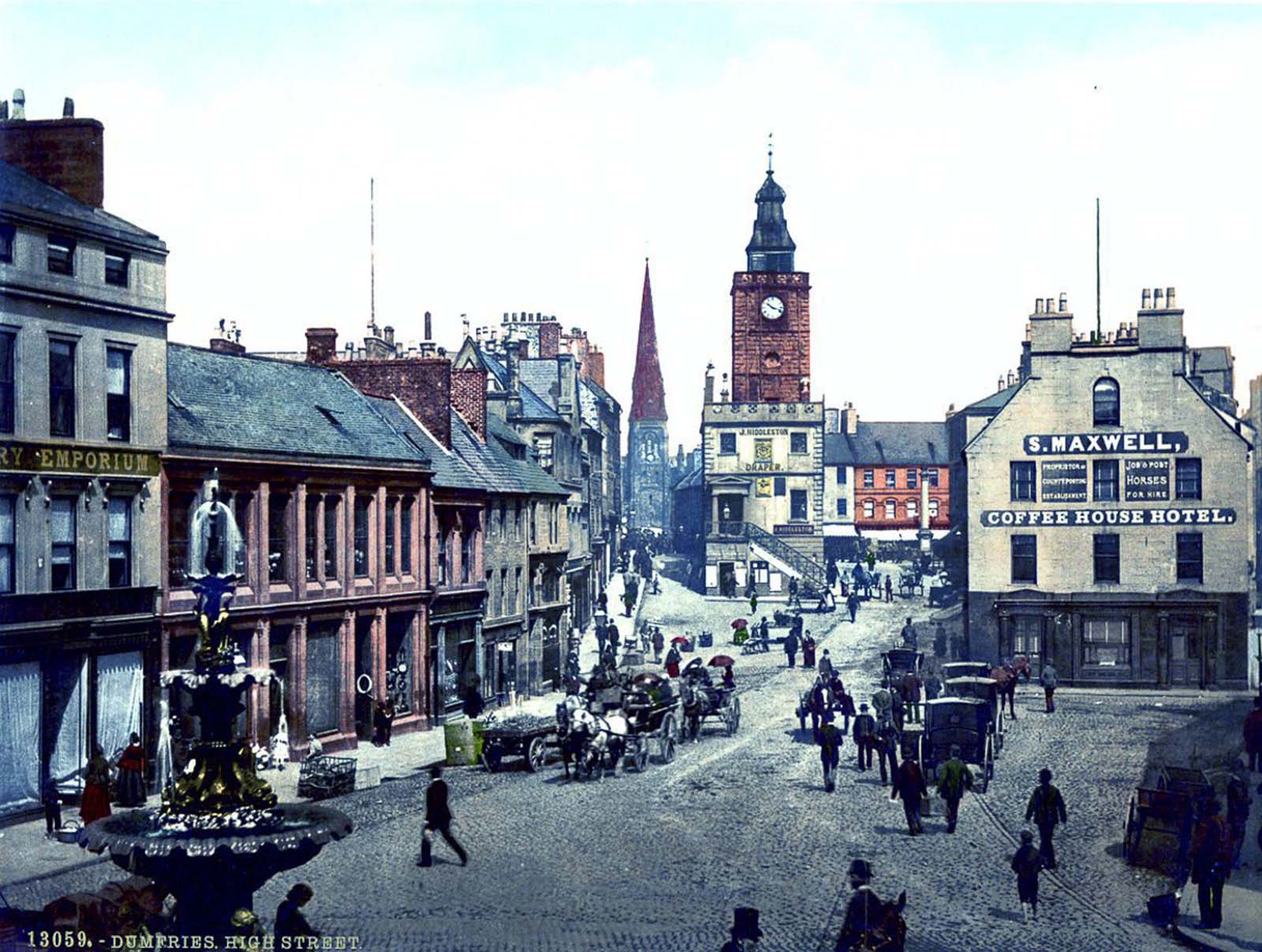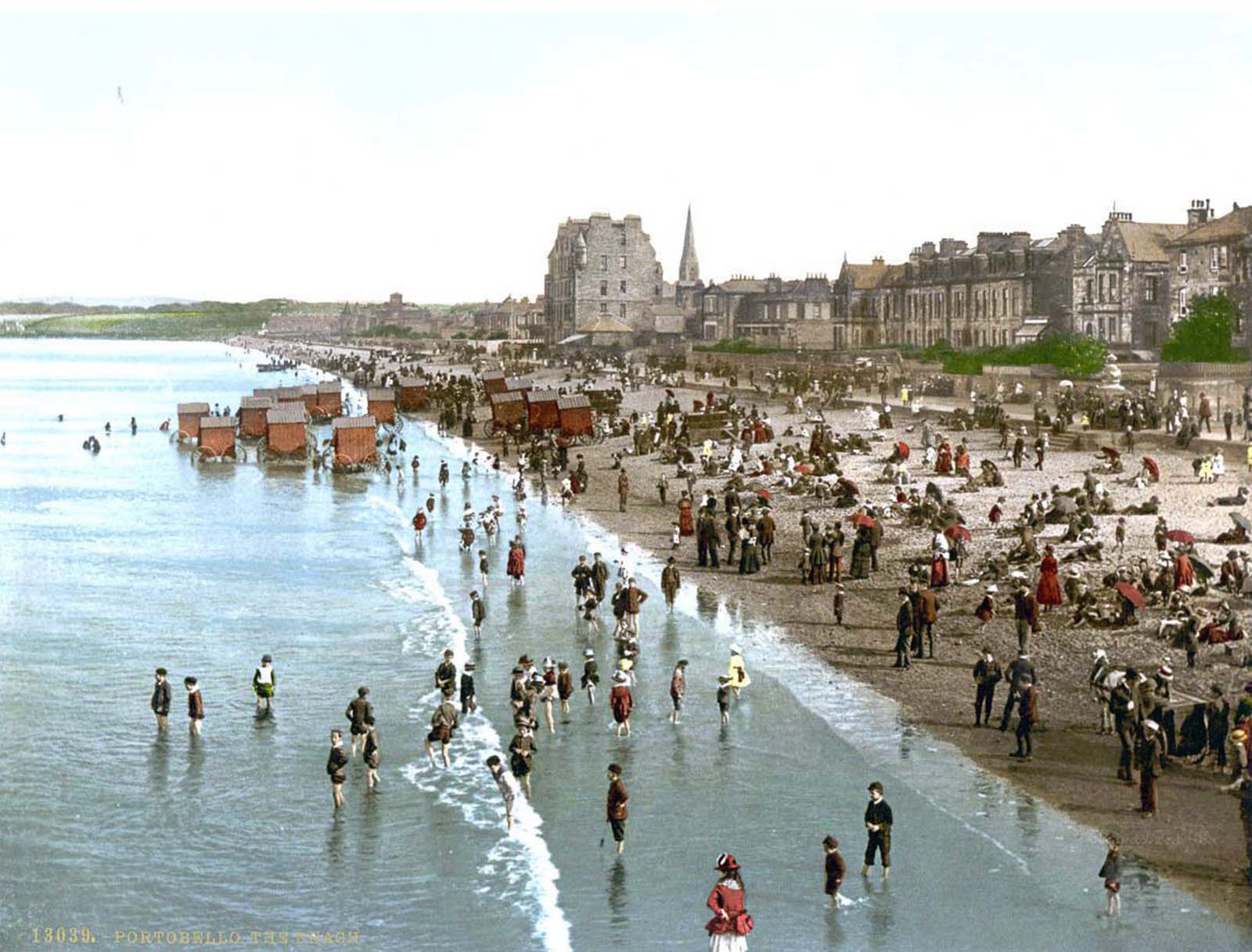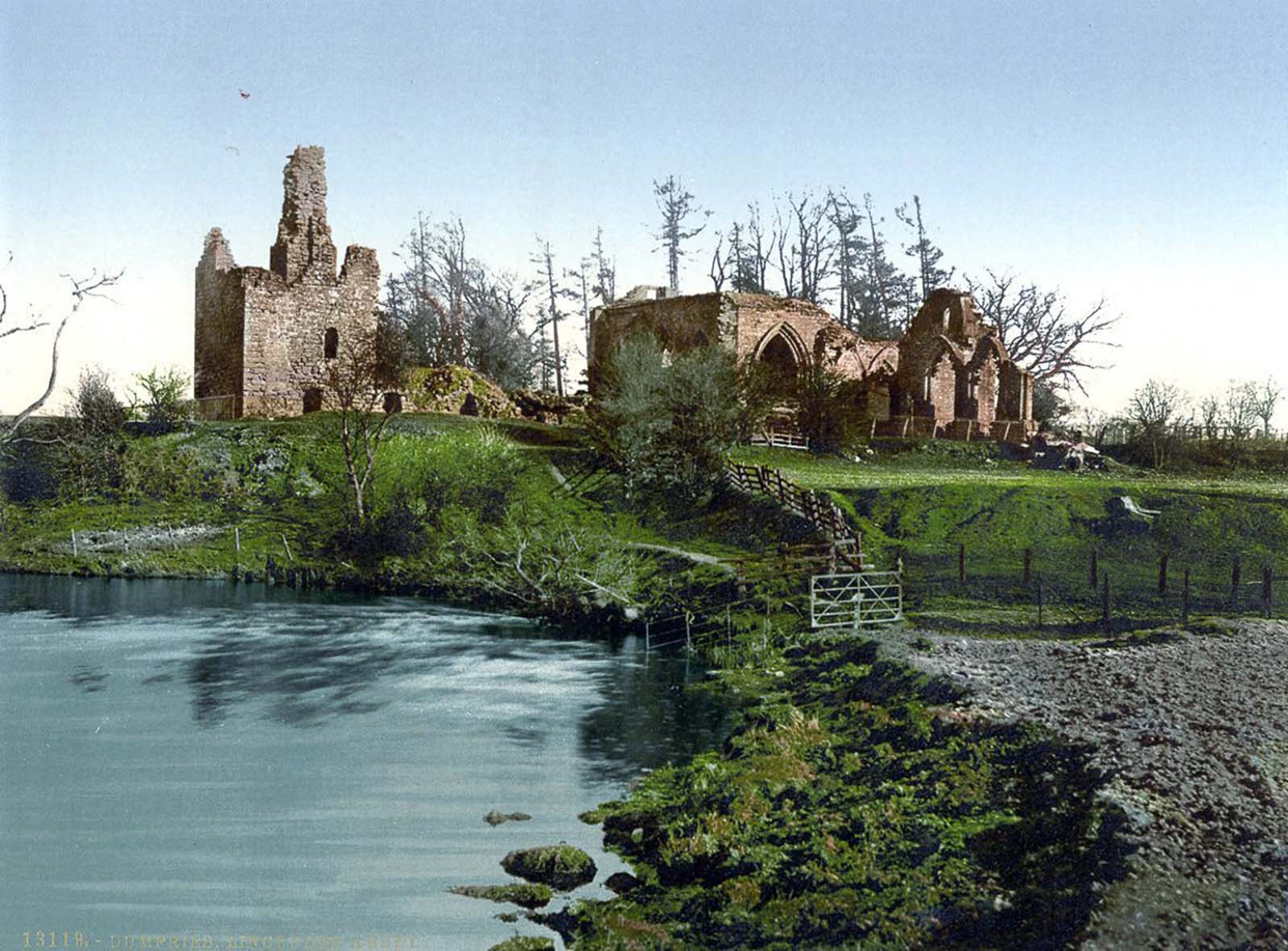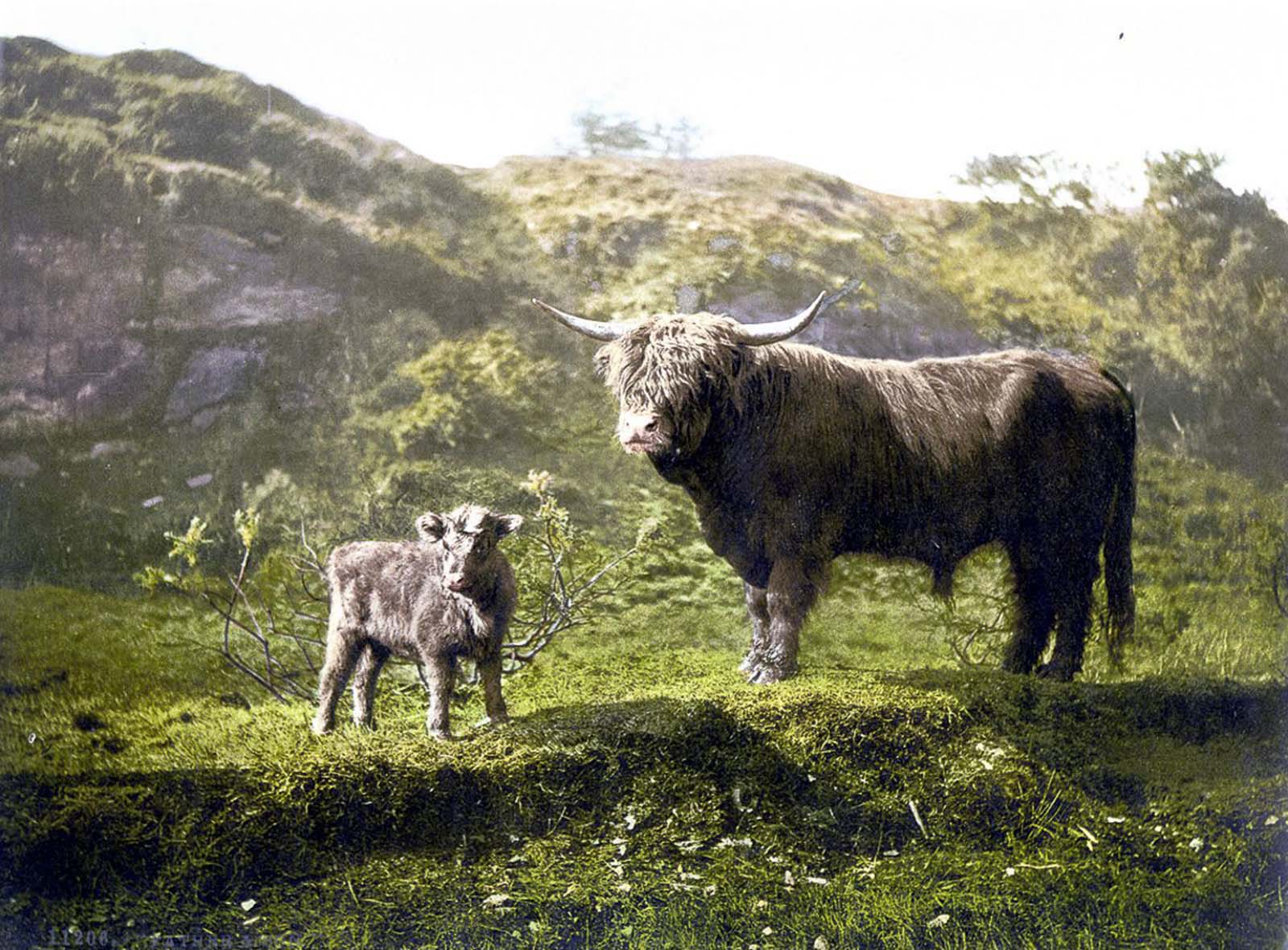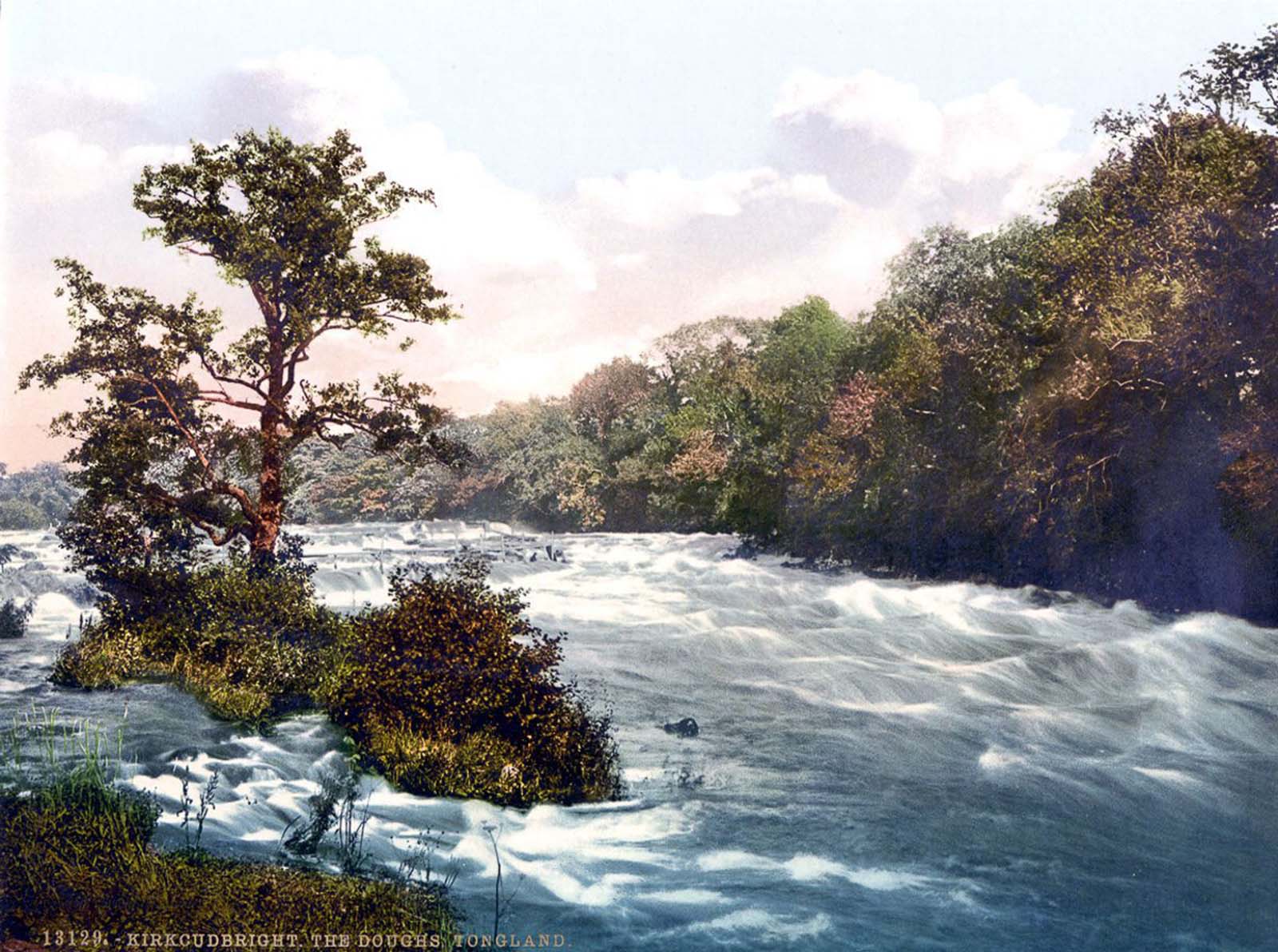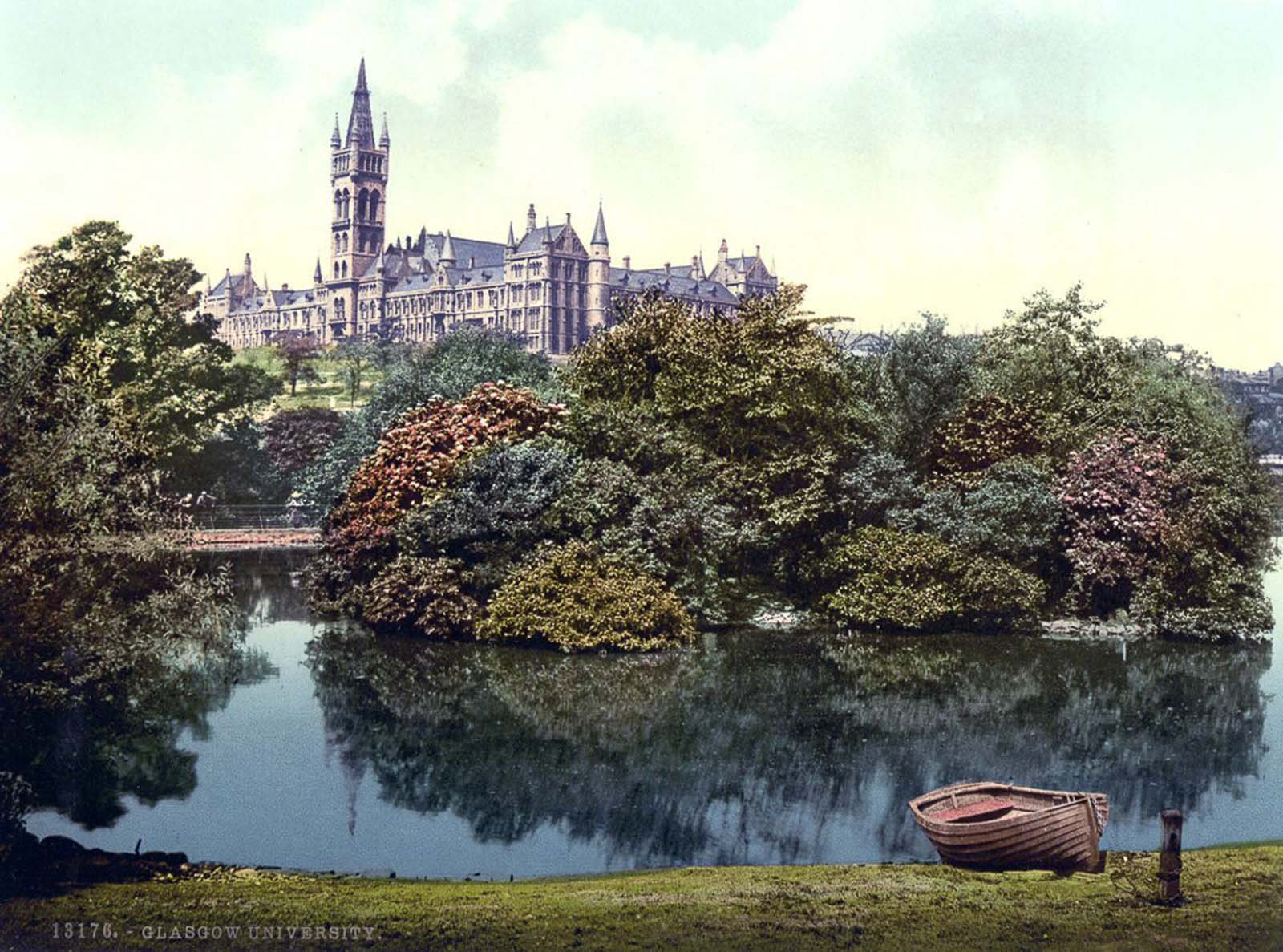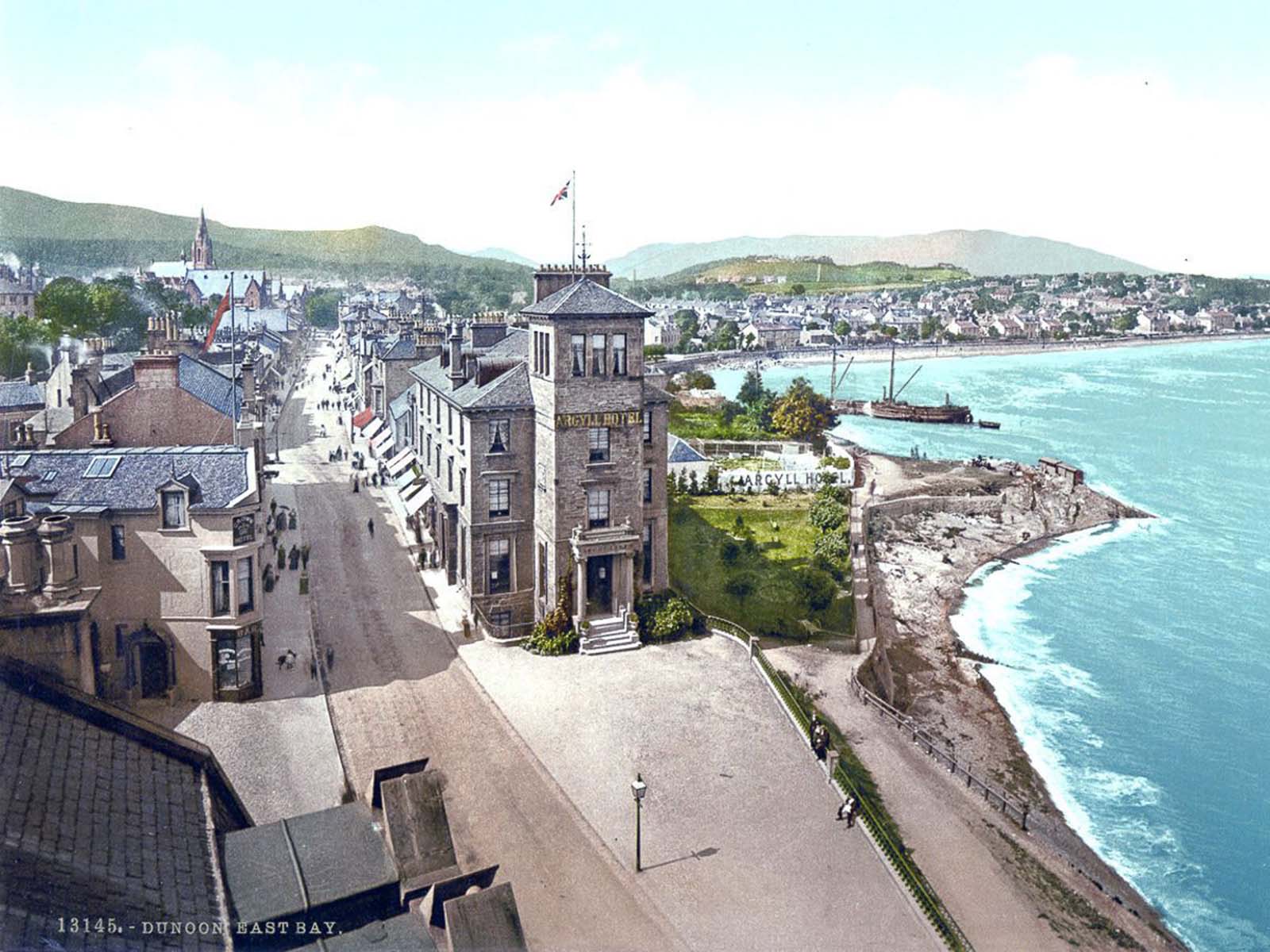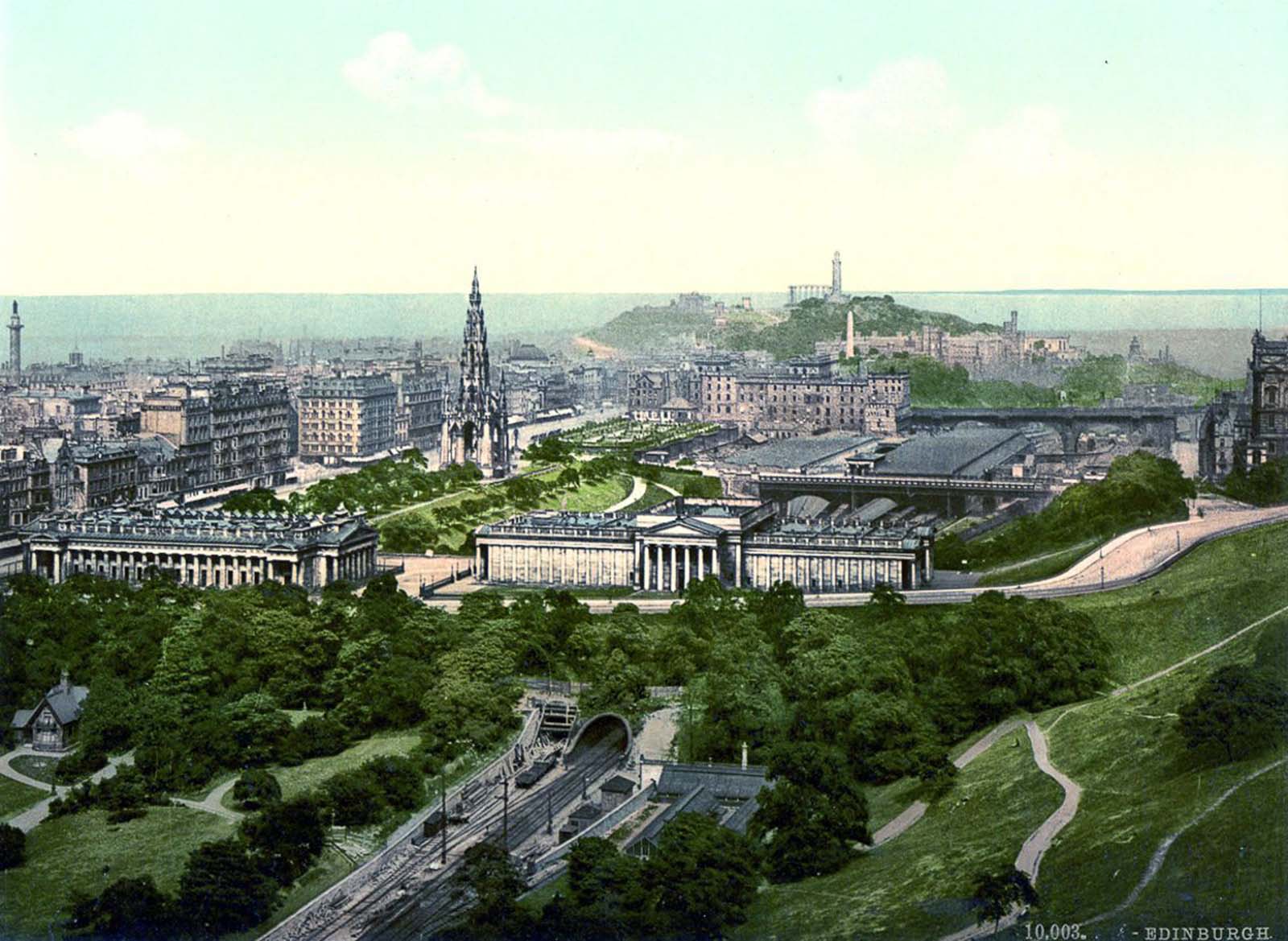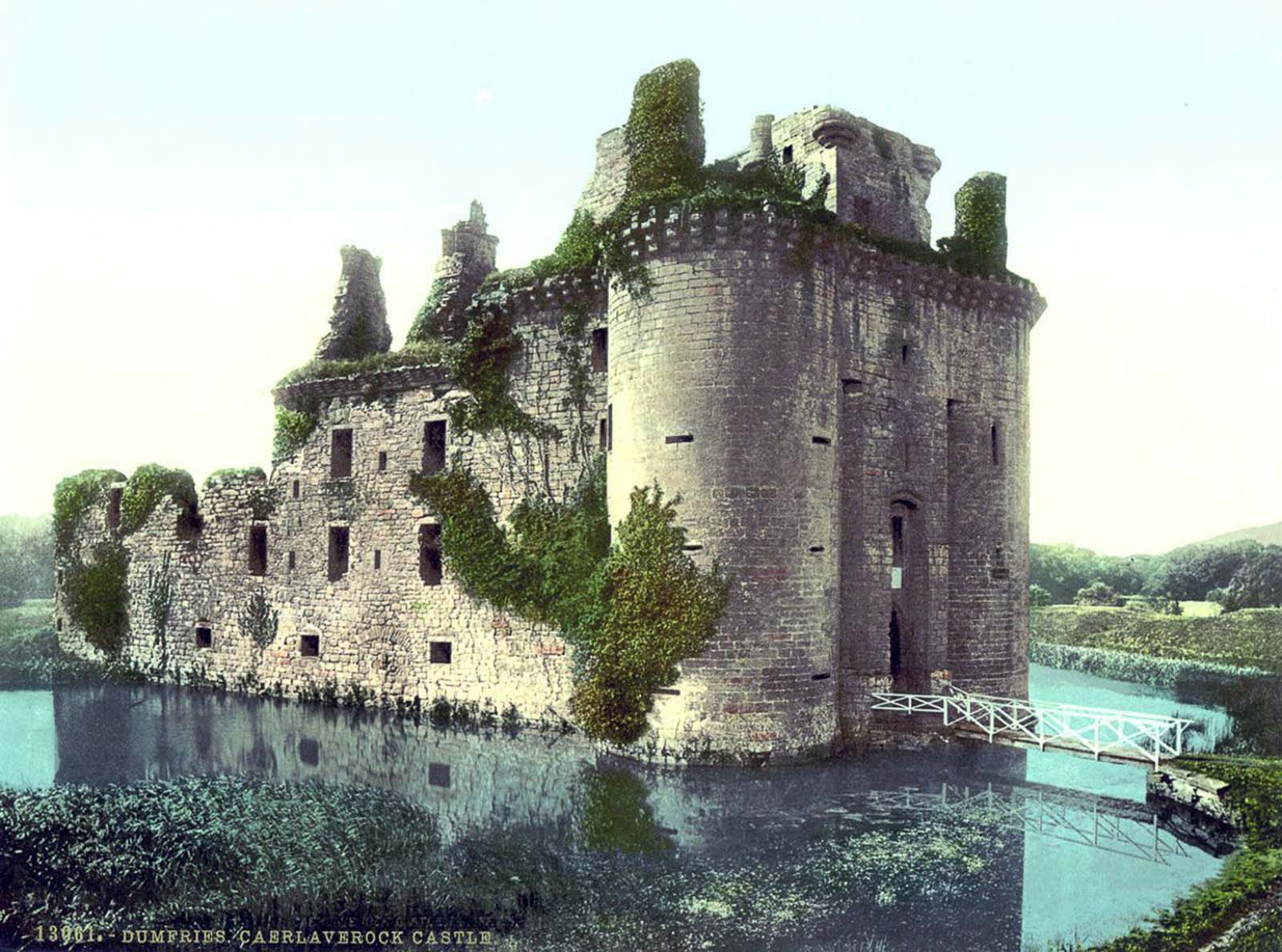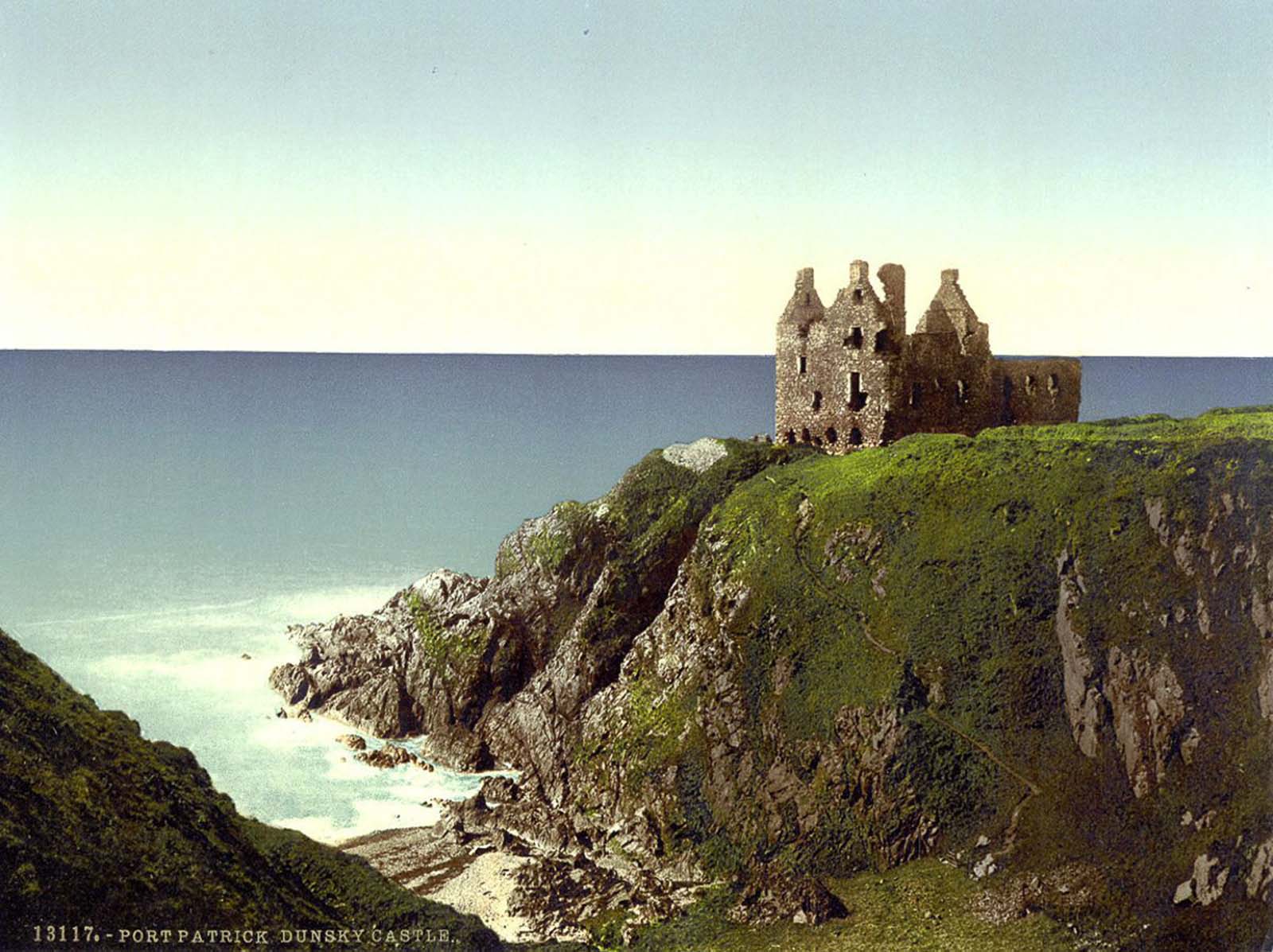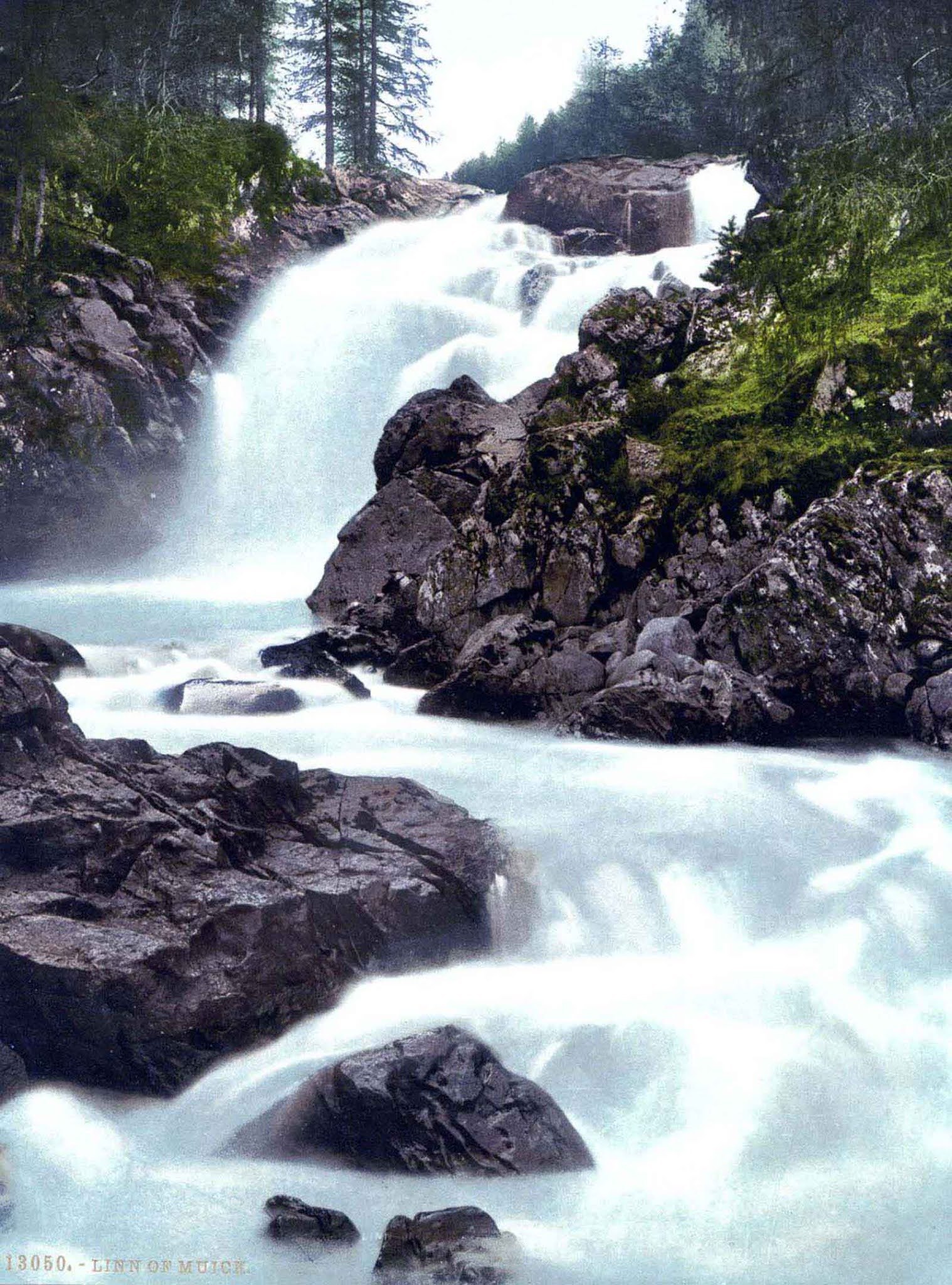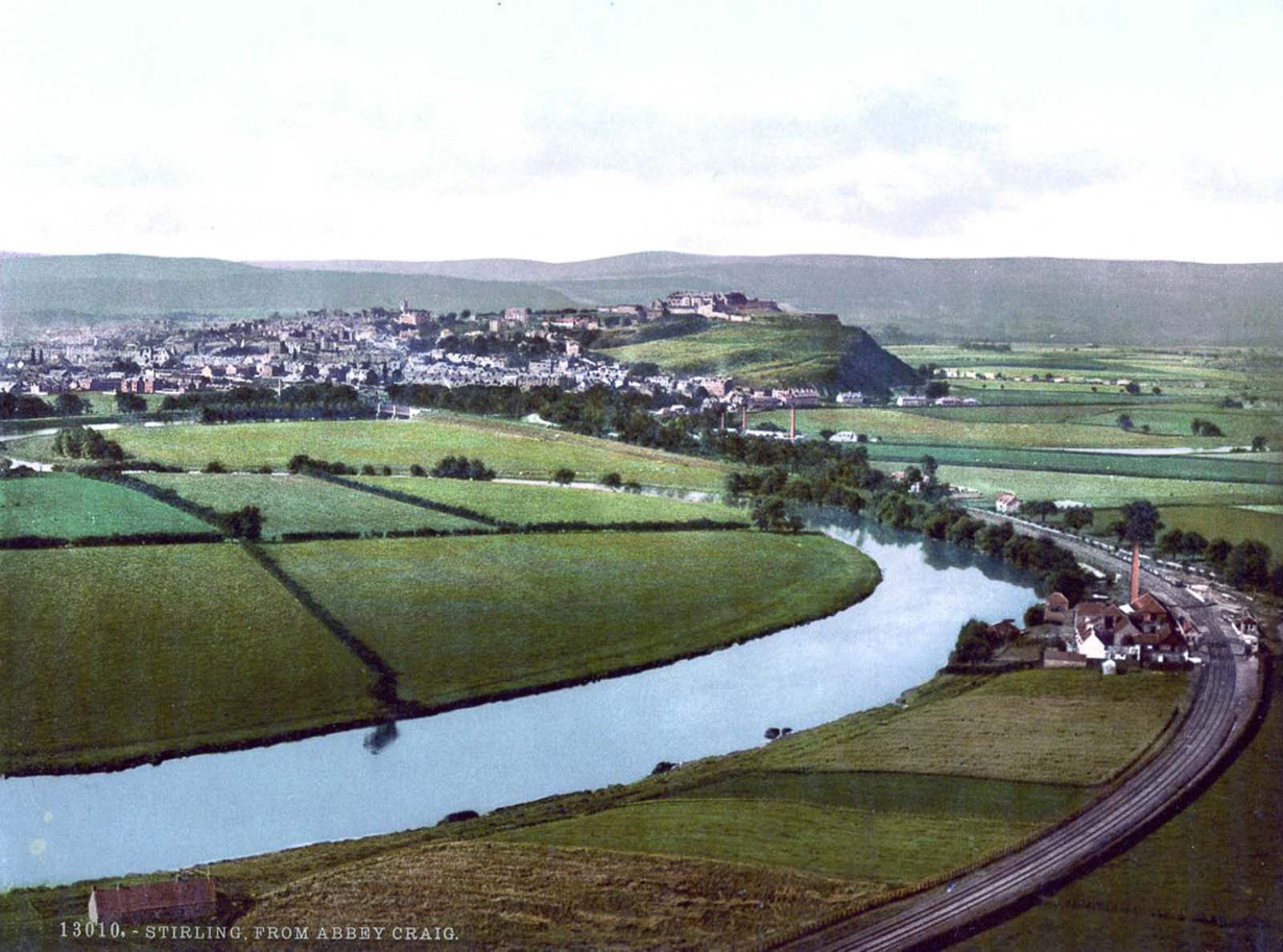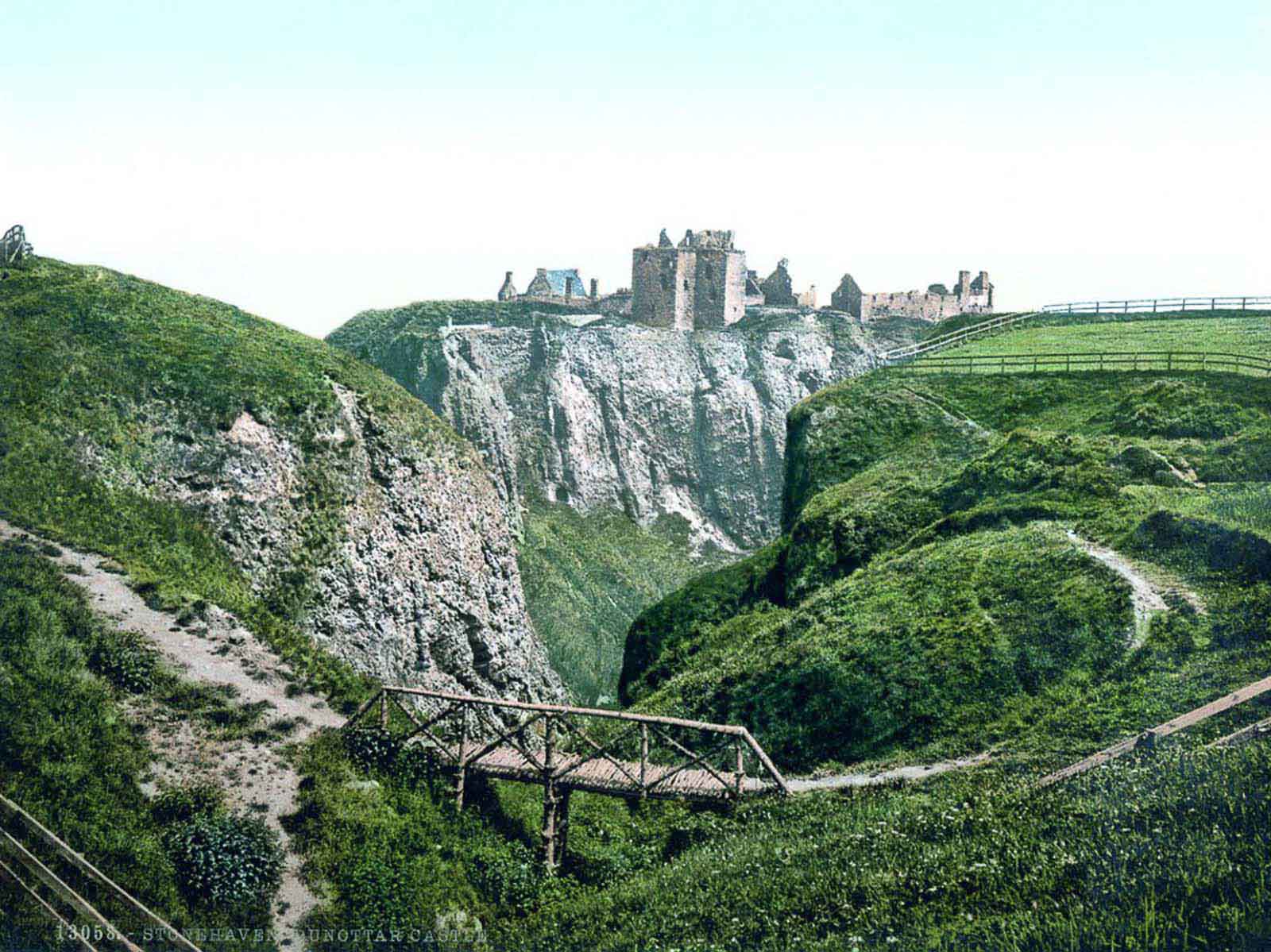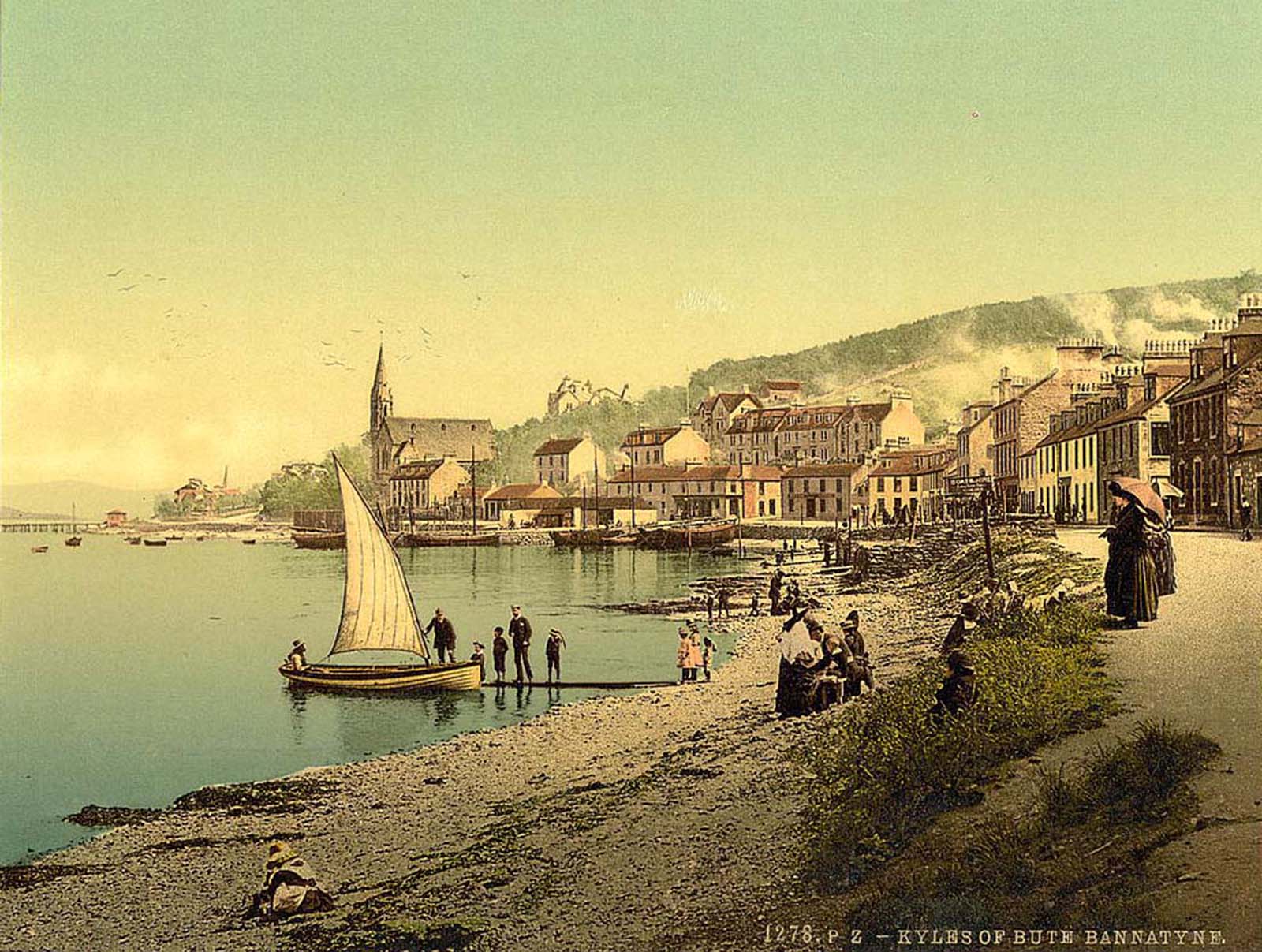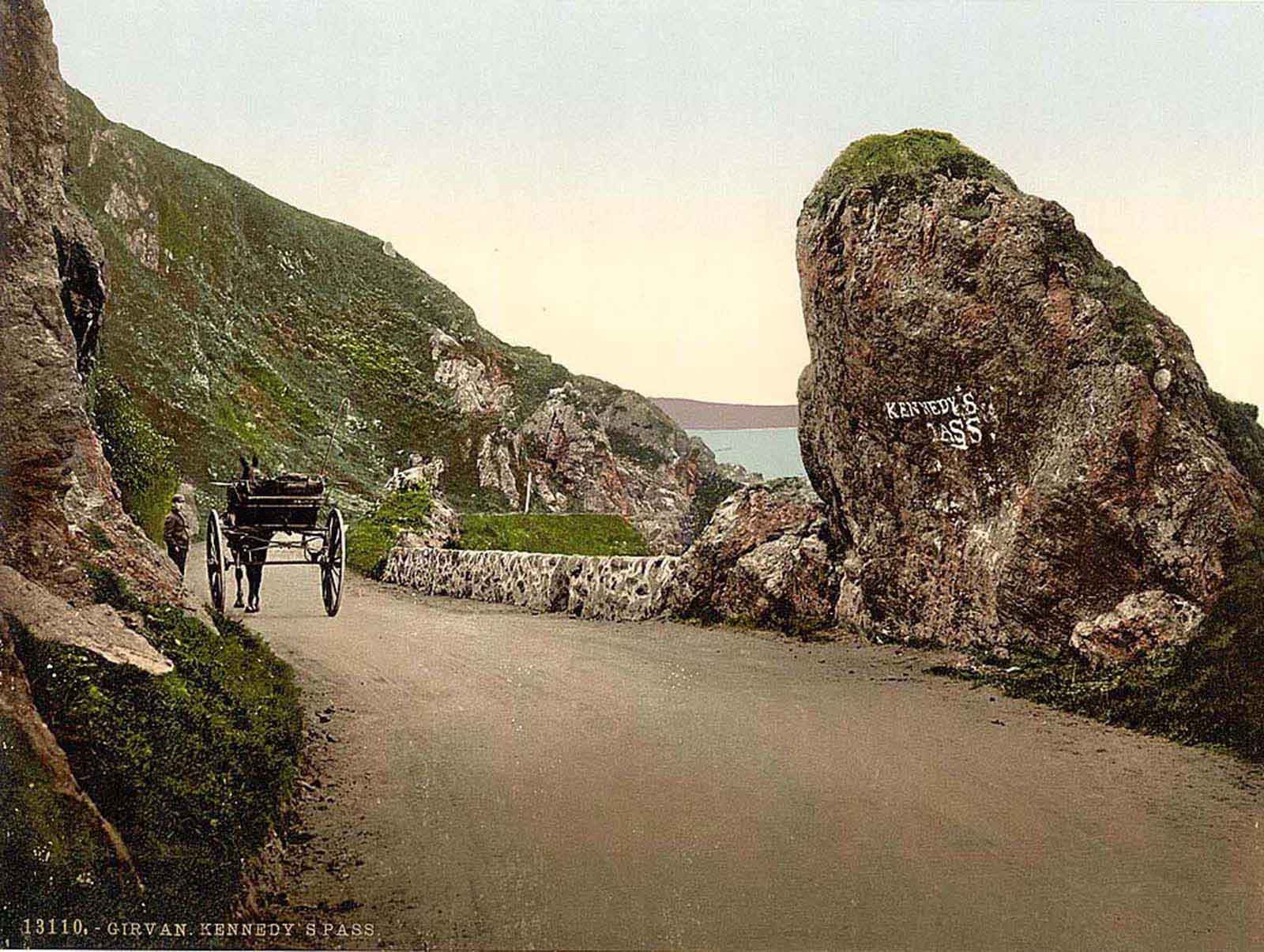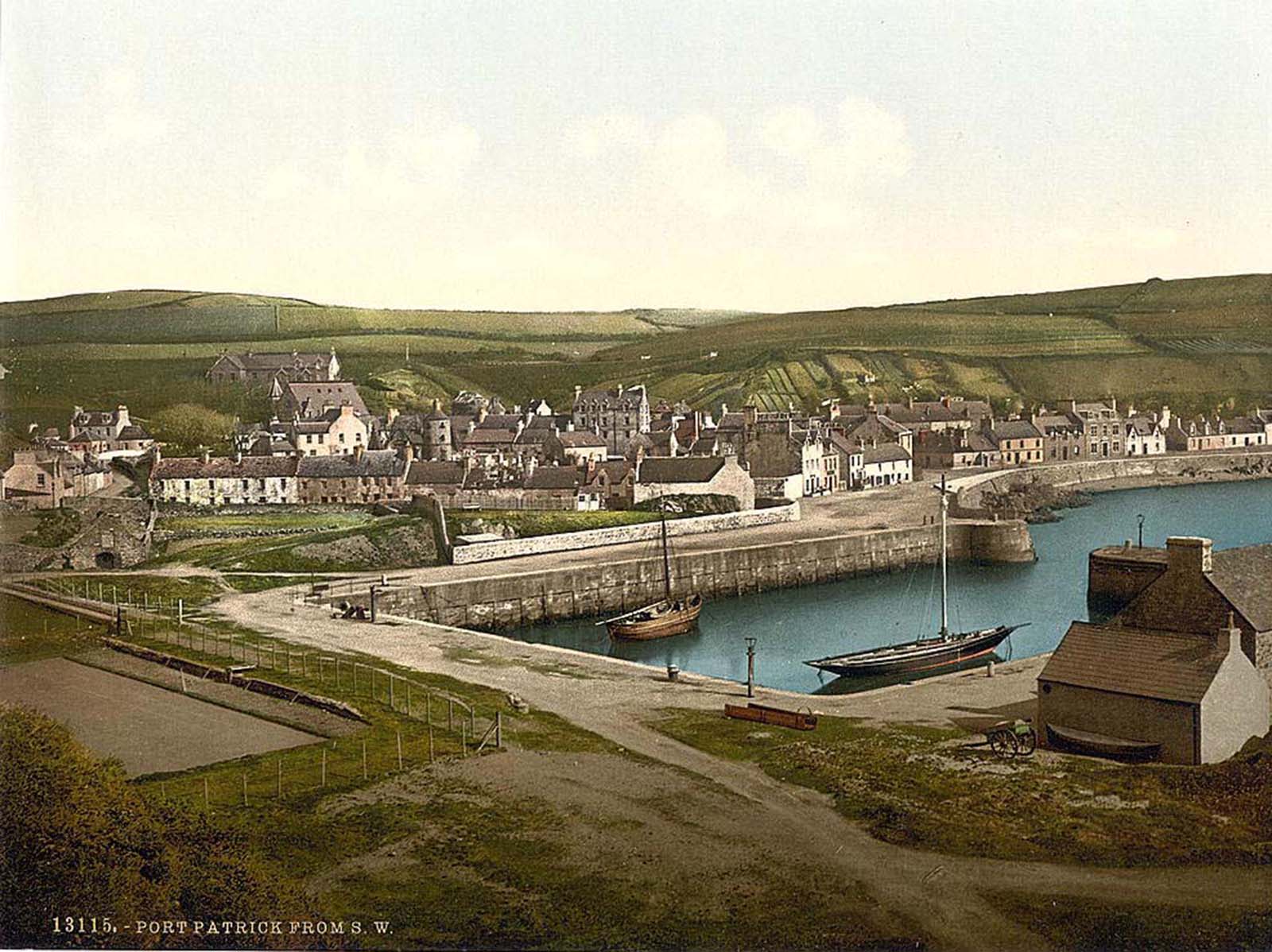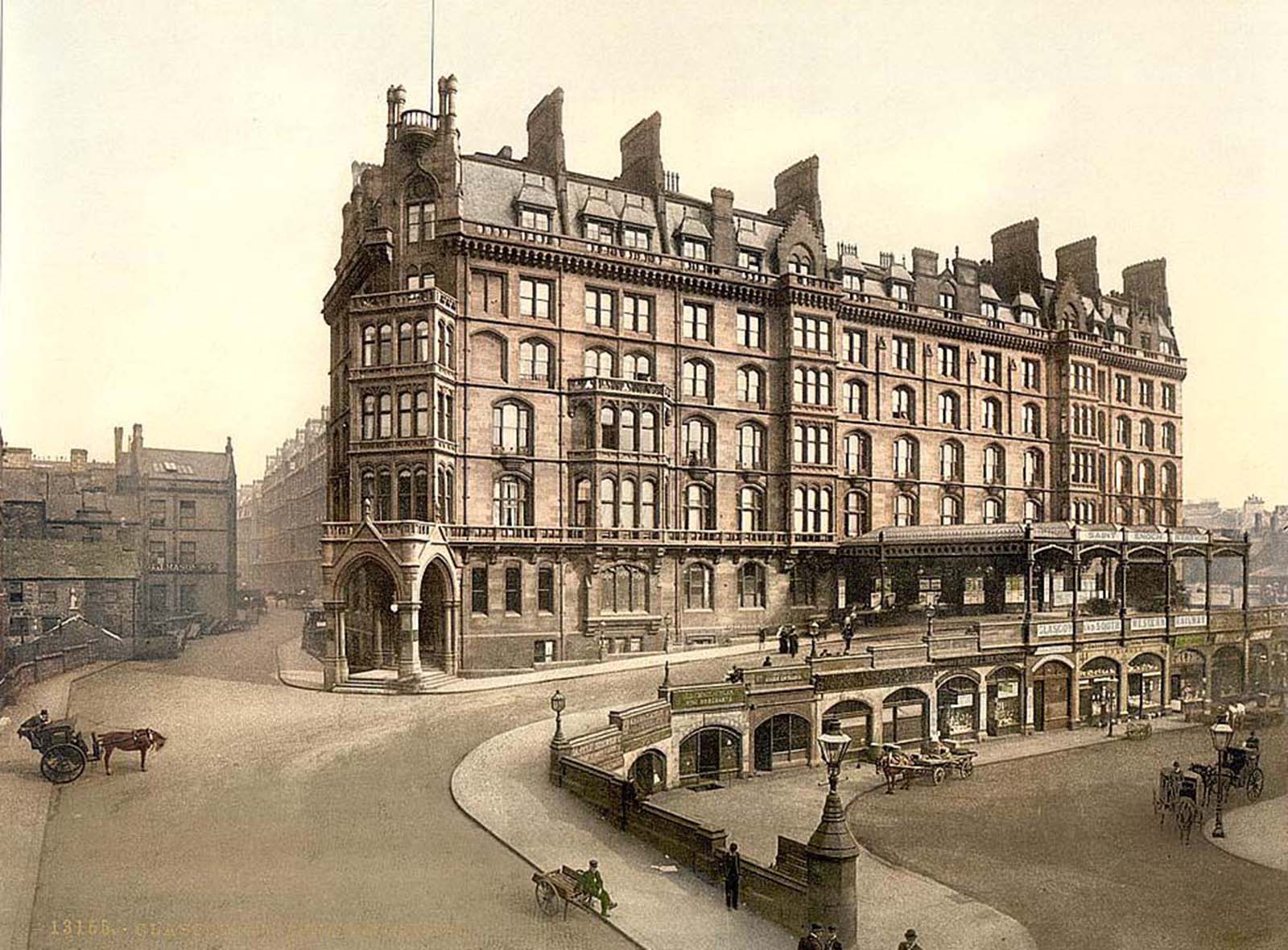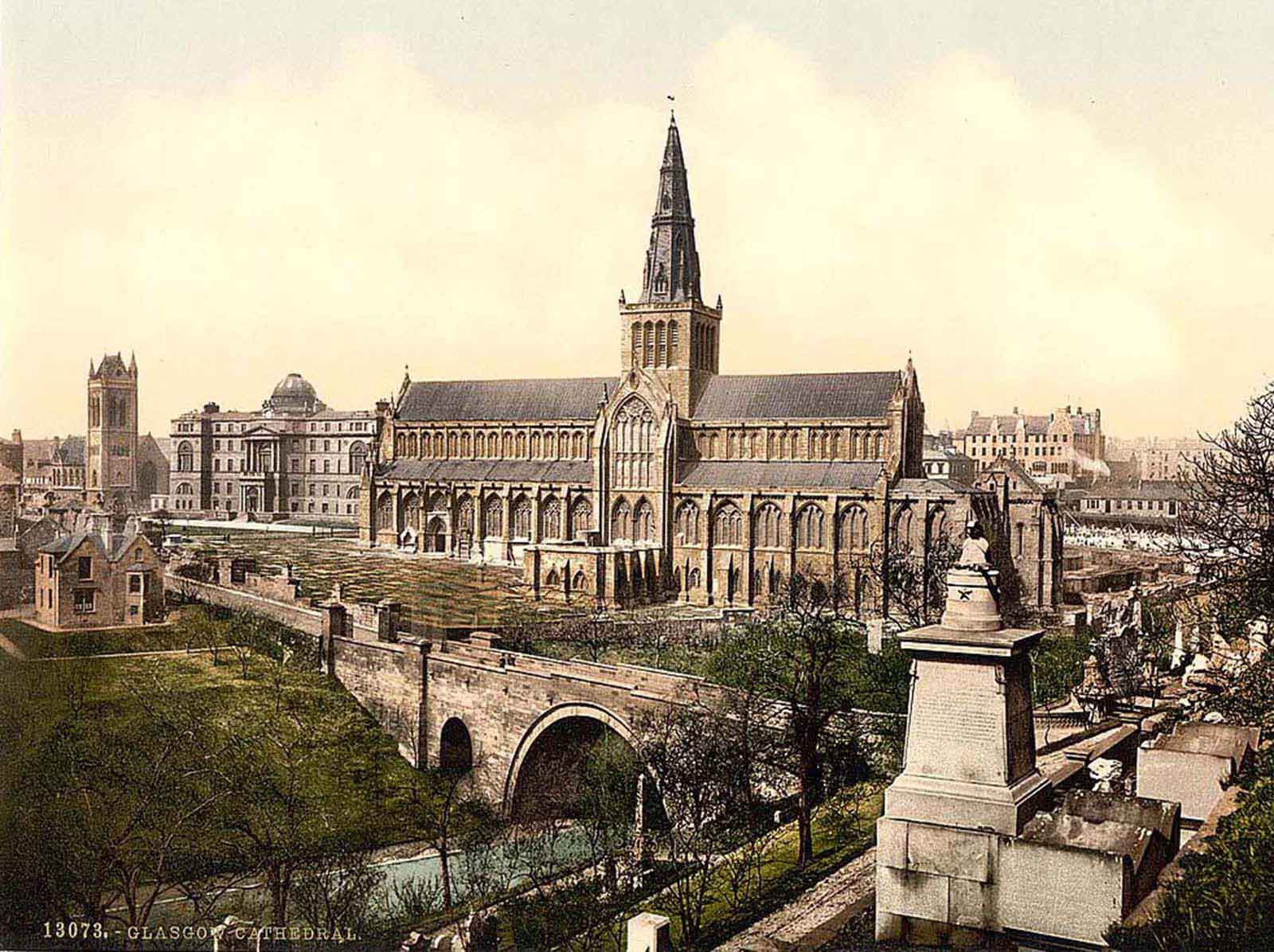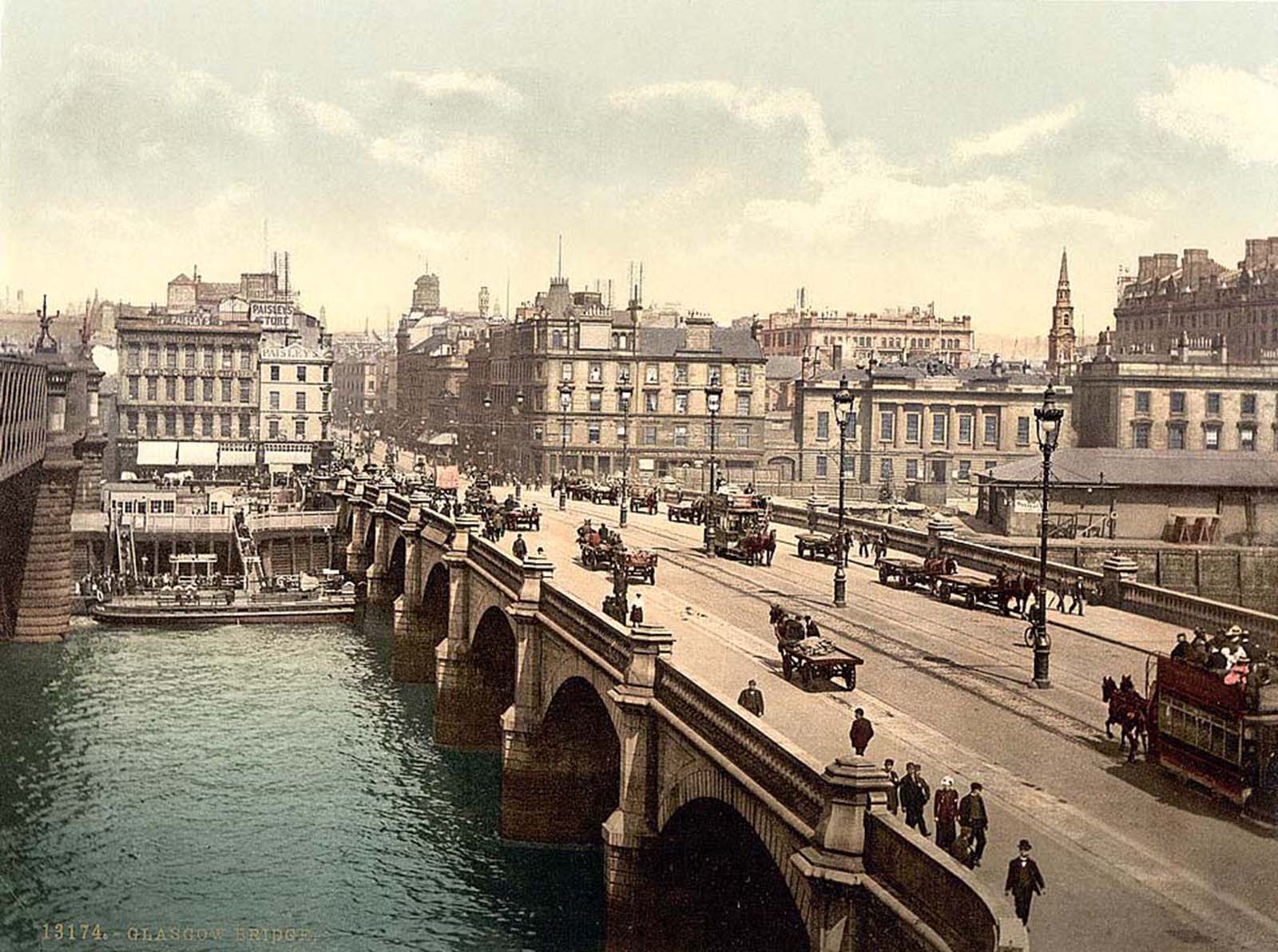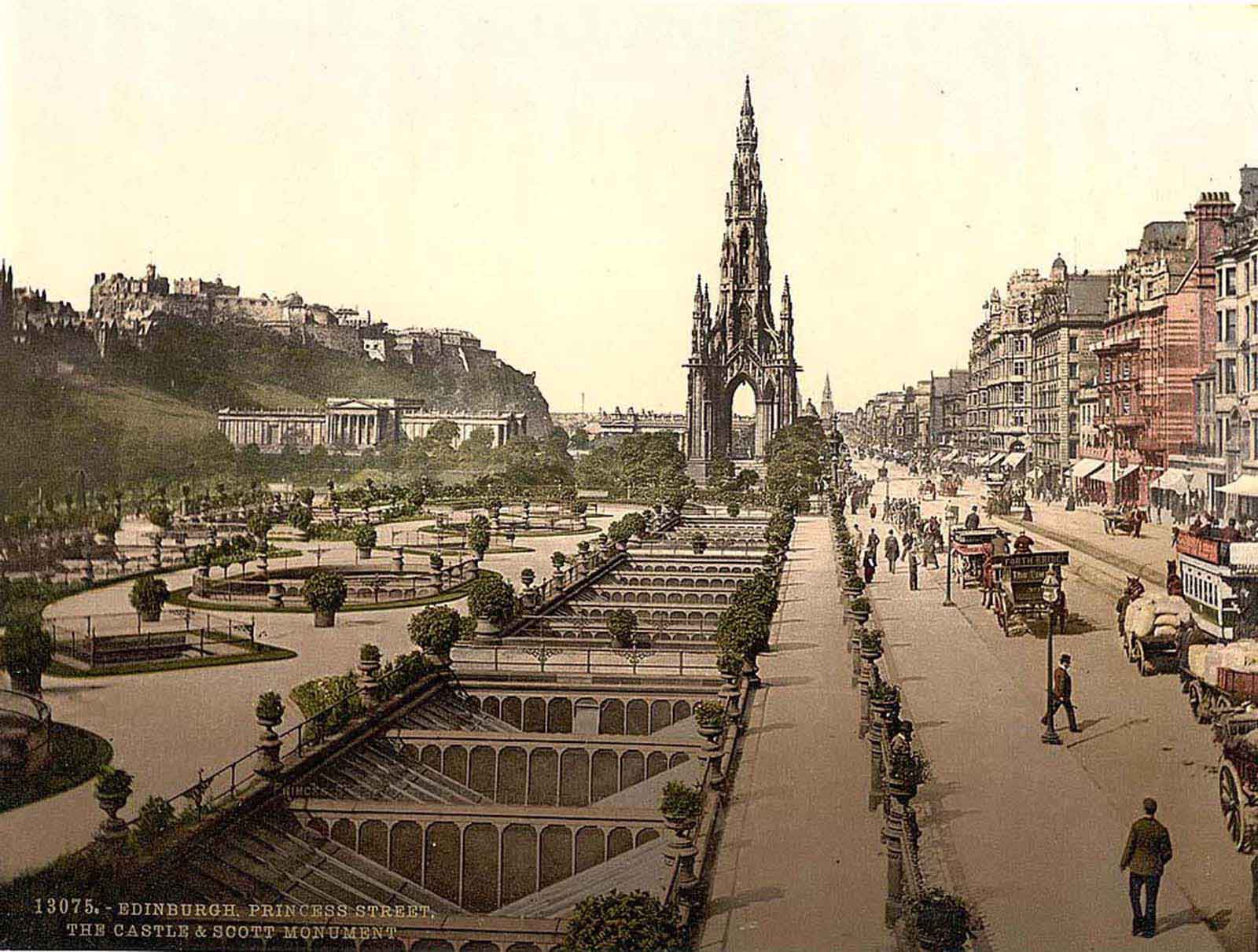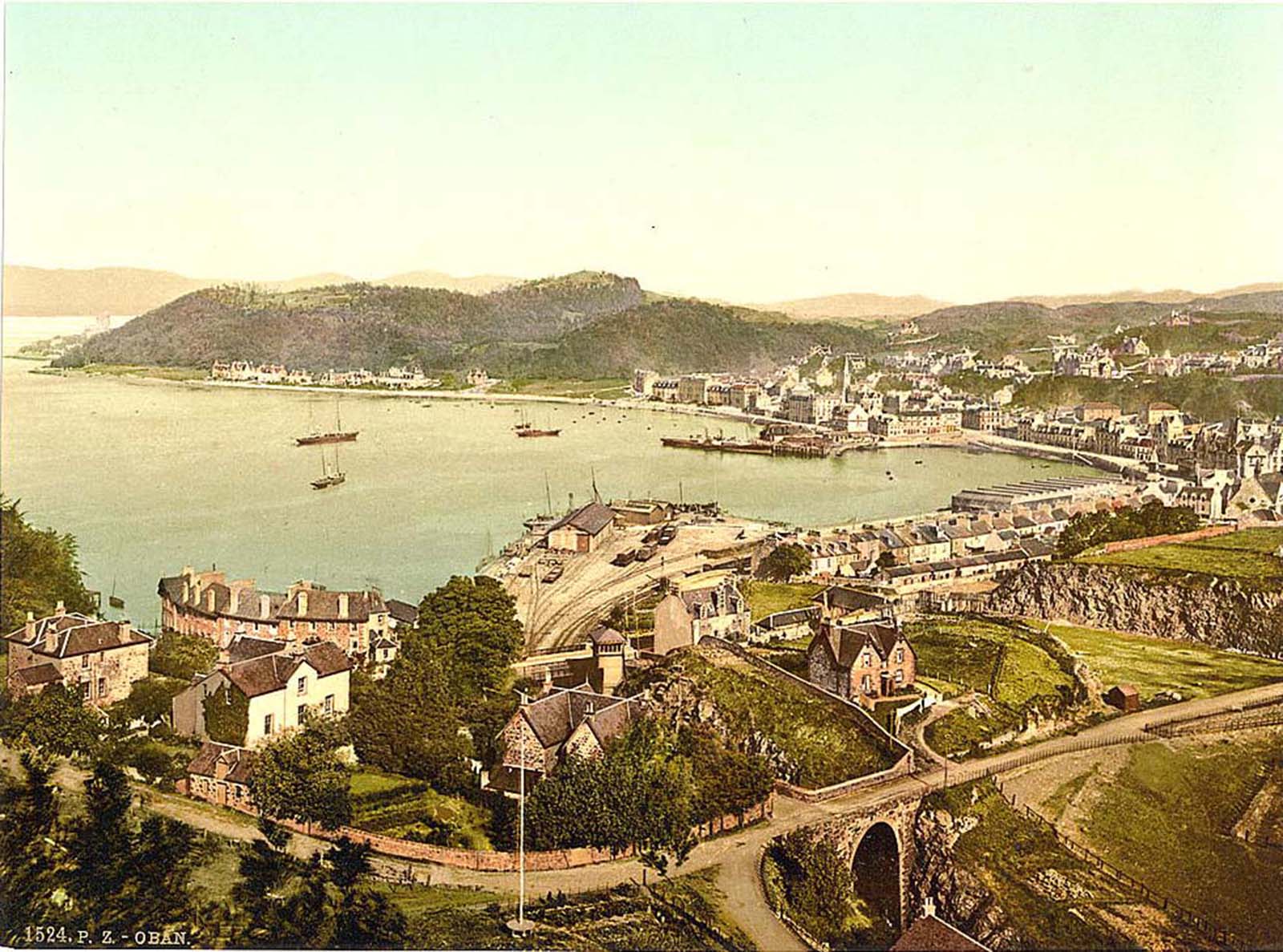The color effects on these pictures are created using the so-called “photochrom” technique. Photochrome was a process for producing colorized images from black-and-white photographic negatives via the direct photographic transfer of a negative onto lithographic printing plates. The process was invented in the 1880s and was most popular in the 1890s. The result is a cross between a photograph and a painting that depicts famous Scottish towns, landscapes, and buildings in a unique way. Scotland was already one of the most urbanized societies in Europe by 1800. The industrial belt ran across the country from southwest to northeast; by 1900 the four industrialized counties of Lanarkshire, Renfrewshire, Dunbartonshire, and Ayrshire contained 44 percent of the population. Glasgow and the River Clyde became a major shipbuilding center. Glasgow became one of the largest cities in the world and nicknamed “the Second City of the Empire” after London. The industrial developments, while they brought work and wealth, were so rapid that housing, urban planning, and provision for public health did not keep pace with them, and for quite a time the living conditions in some of the small towns and cities were notoriously bad, with overcrowding, high infant mortality, growing rates of tuberculosis and industrial pollution. The Detroit Photographic Company was launched as a photographic publishing firm in the late 1890s by Detroit businessman and publisher William A. Livingstone, Jr., and photographer and photo-publisher Edwin H. Husher. They obtained exclusive rights to use the Swiss “Photochrom” process for converting black-and-white photographs into color images and printing them by photolithography. This innovative process was applied to the mass production of color postcards, prints, and albums for sale to the American market. The firm became the Detroit Publishing Company in 1905. The color photographs of Scotland collected in this article are part of a wider archive of historic “photochrom” pictures bought by the Library of Congress. (Photo credit: Library of Congress). Notify me of new posts by email.
Δ Subscribe
